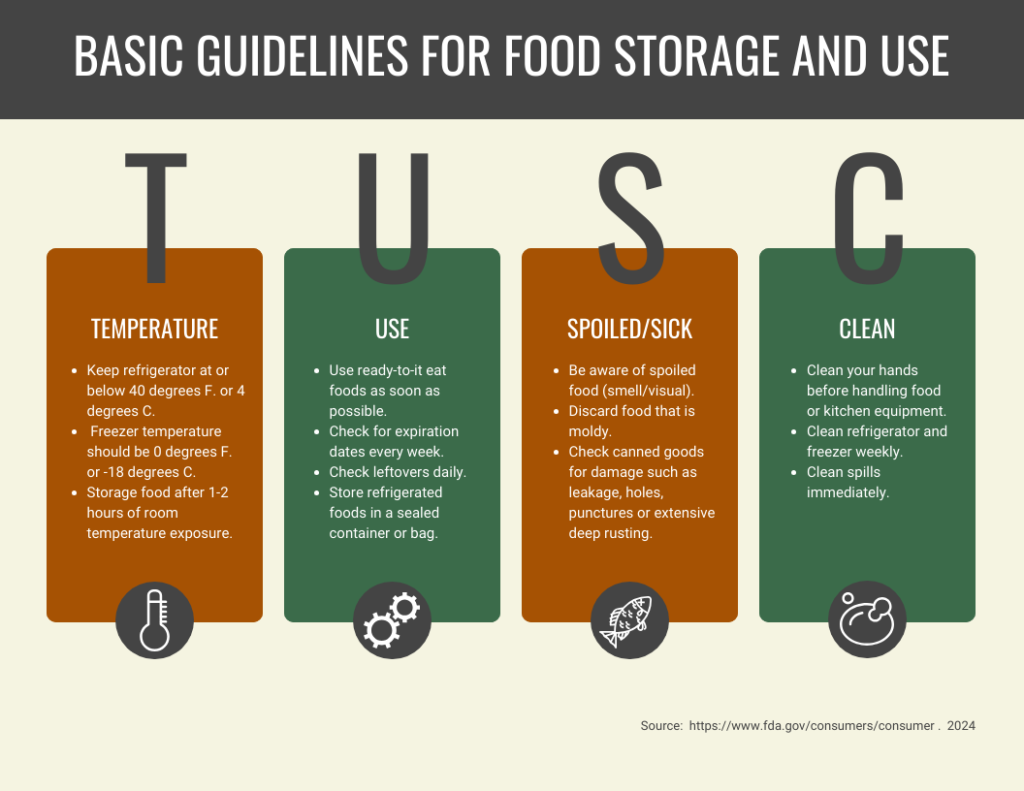
This job aid was designed to help kitchen related employees to minimize waste and reduce health risks. It provides clear and actionable instructions that improve efficiency in food management while reducing cognitive load. (Created using FDA regulations and recommendations).
Who Can Benefit?
Food service workers, chefs, food inventory staff, warehouse staff, delivery workers and supervisors.
Tools Used:
Venngage, Canva
Overview
According to the FDA (Food and Drug Administration, 2024), EPA (Environmental Protection Agency, 2016) and USDA (United States Department of Agriculture, 2024), in the United States, food waste is estimated at between 30–40 percent of the food supply. That is approximately 133 billion pounds and $161 billion worth of food in 2010. Unfortunately, it is the single largest category of material placed in municipal landfills. Food is a fundamental necessity that sustains life and promotes health. Ensuring the safety and proper storage of food is of paramount importance for the wellbeing of all of us. Safe food practices prevent spoilage, reduce the risk of foodborne illnesses, and maintain the nutritional value of our meals. Maintaining a well-rounded food storage system is crucial for ensuring access to safe, nutritious food in any situation. This job aid helps achieving safe food practices.
Process
I started this instructional guide by researching the food waste problem and good food storage practices. I also interviewed cafeteria employees at schools, cafeteria managers, and chefs to gain a comprehensive perspective on the amount of food wasted daily due to incorrect handling and storage.
After understanding the problem, I investigated various ways to prevent it. I read articles on different government websites and summarized the most important aspects, classifying them into four categories: Temperature, Use, Spoiled/Sick, and Clean. Each category includes key points that can be followed.
I created this printable job aid to provide immediate support for employees. It offers clear and concise instructions, helping employees find information quickly without interrupting their workflow and fostering independent work. Having a printed job aid is valuable because it provides immediate access to important information almost everywhere food is handled, serving as just-in-time support.
Visual Mockup
I kept mostly neutral tones combined earth related colors drawing a visual and subconscious connection to nature. Green, often brings to mind fresh products, health and vitality while brown and tan can evoke thoughts of nature. I kept a simple and straightforward visual format to enhance readability and ensure key information stands out, making it easy for readers to find what they need quickly. The information is divided into 4 categories for a better visualization.

Results and Takeaways
After a few interviews with food industry experts, several key takeaways emerged regarding food waste prevention. First, the importance of accurate inventory management was emphasized; experts suggested implementing advance tracking systems to reduce over-purchasing and waste. Secondly, the role of consumer education was highlighted. Informing staff about proper storage can significantly cut down waste. Given the widespread presence of food in human habitats, it is crucial to educate food-related employees on proper storage techniques to ensure quality, reduce waste, and to guarantee safety.